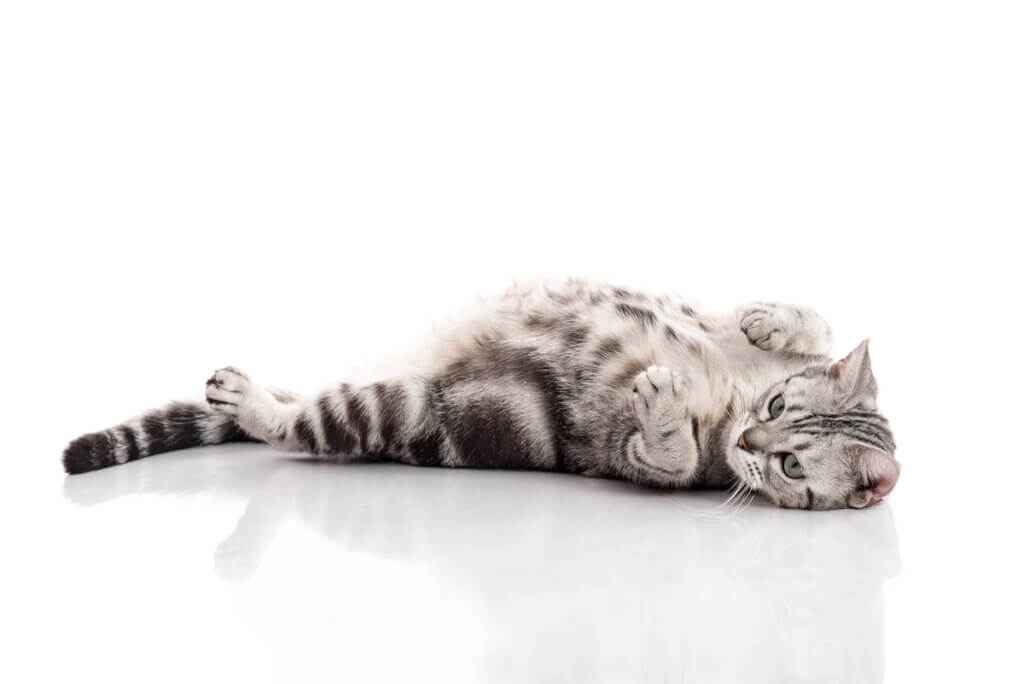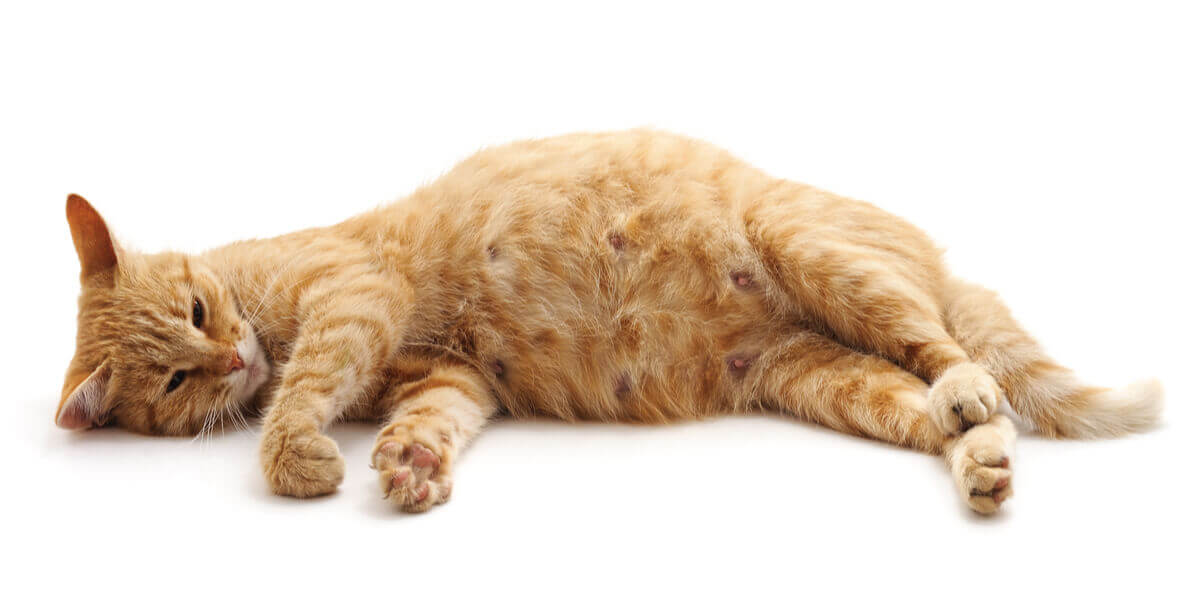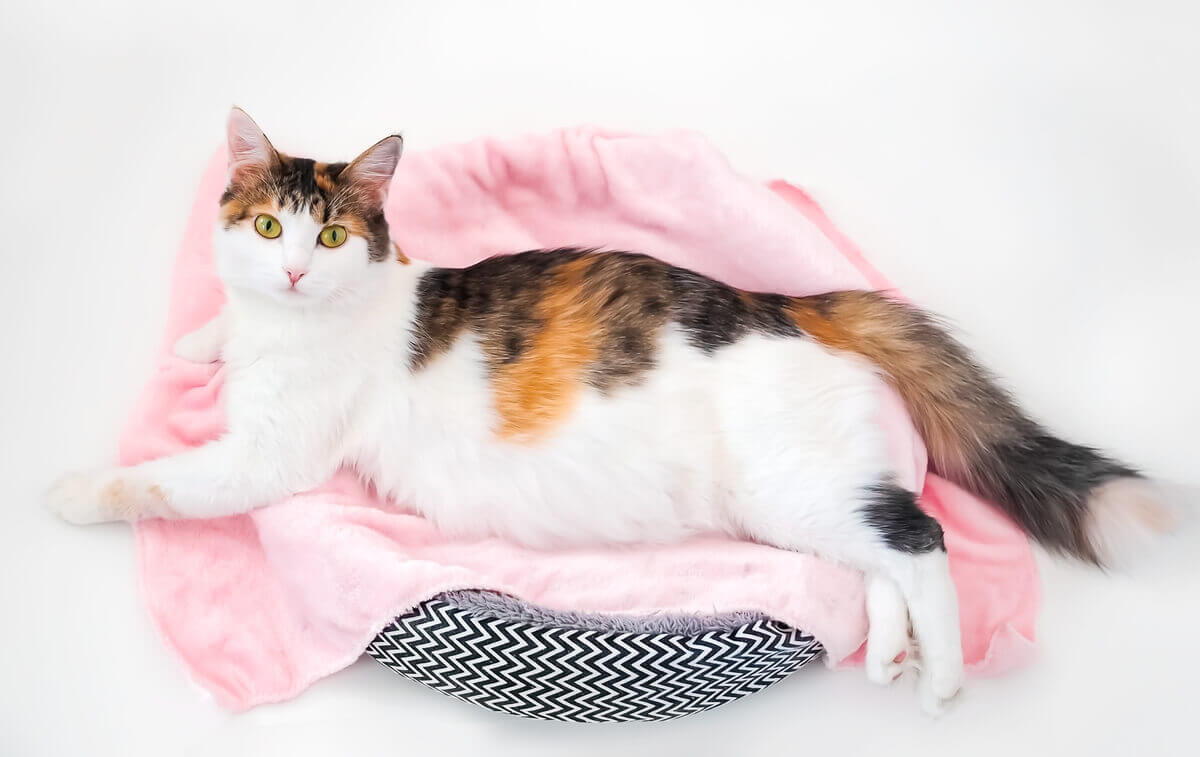Common Postpartum Reproductive Emergencies in Cats

Once the gestation period is over, many pet owners breathe a deep sigh of relief. However, complications can still occur. In fact, there are a number of postpartum reproductive emergencies that can affect domestic cats. Some are more common than others.
Therefore, cat owners must pay attention to any sign of illness, especially if it puts not only the mother in danger but also her litter.
If you have the slightest suspicion that your cat is suffering from any of these pathologies, it’s best to see a veterinarian. That way, a professional will be able to assess the condition of your cat and of her babies.
Common postpartum reproductive emergencies in cats
Below, we’ll talk about the most common postpartum reproductive emergencies in domestic cats.
Metritis
Just as the name indicates, this involves an inflammation of the uterus, normally accompanied by a bacterial infection. The most common causes tend to be the following:
- Long deliveries
- An incorrect uterine involution after birth
- Placental or fetal retention
- Obstetric interventions

Symptomology
The most frequent symptom is that the female presents an abnormal vulvar secretion, with pus and blood. Upon palpating the abdomen, you’ll note that the abdomen is enlarged and full of liquid. What’s more, the cat will be apathetic and weak.
Treatment
First, the veterinarian will stabilize the animal with an IV line and an antimicrobial therapy. Next, the professional will proceed to drain the uterus of the infectious content. This may involve washing the uterus with a saline solution from the cervix. Veterinarians may also choose to drain the uterus by administering oxytocin, which stimulates contraction.
Septic mastitis
Mastitis refers to infections in the breasts. In most cases, it has to do with minor pathologies. However, acute septic mastitis can be very serious.
This pathology involves the entry of bacteria (Escherichia coli, Staphylococcus spp. o Streptococcus spp.) through the nipple during breastfeeding. This can affect one gland or both, producing heat, swelling, and pain. There may even be discoloration of the skin around the nipple.
In the most serious cases, the breast may become gangrenous and form abscesses.
Treatment
If the veterinarian prescribes oral antibiotics, this needs to be done carefully if the cat continues to nurse her babies. Why? Because many of these substances can be excreted through the milk. In cases of acute septic mastitis, it may be necessary to remove the litter and feed them artificially.
Persistent septic mastitis will require a mastectomy, or the removal of the mammary gland.
Placental/fetal retention
This is an uncommon pathology among domestic cats, despite the concern that it raises among cat breeders. In most cases, suspicions are unfounded, since the placentas aren’t expelled right after each kitten is born.
Symptomology
The female may produce a green, smelly vulvar discharge for several weeks after birth. What’s more, her general state of health will worsen, which may prevent her kittens from being able to nurse.
In order to confirm the diagnosis, the veterinarian will perform an ultrasound of an endoscopy. This is because the symptoms are not pathognomonic or, in other words, evident or generalized. In fact, abdominal palpation may give false positives. That’s because the normal postpartum uterus can have sections that are more dilated than others.
Treatment
The most serious cases involve septic shock and the removal of the infected material will be imperative. In this sense, the cat will need the repeated administration of oxytocin in order to produce the expulsion of the retained placenta. This resolves the issue, but the animal will still need to continue antimicrobial treatment.
The problem is that, if the retention is very advanced, the action of oxytocin in the uterus is much weaker and therefore the clinical effect will be minimal. In these cases, doctors will contemplate the use of prostaglandins. As a last resort, professionals will resort to performing a hysterectomy. In other words, the total extraction of the uterus.
Uterine prolapse
Prolapse of one or both uterine horns is also rare in domestic cats. Just the same, it may occur after birth or miscarriage among cats of all ages. The etiology is uncertain but related to:
- Damaged pelvic muscles
- Uterine atony (lack of strength in the uterine muscles)
- Uterine trauma
- Difficult birth – in other words, abnormally hard or laborious
Symptomology
If a cat’s medical history includes a recent birth or miscarriage, then vets may suspect the cause. What’s more, prolapse is usually evident through the vaginal orifice and the cat will continue to have abdominal contractions. The most serious consequence is that the prolapsed uterus suffers trauma or even mutilation by the cat herself.
Treatment
Once again, the veterinarian will first need to stabilize the cat through an IV line. Then, he or she will go on to perform surgery in order to reintroduce the prolapsed uterus. When the uterine vessels been seriously compromised, then the vet will need to perform an ovariohysterectomy. In other words, the surgical removal of the ovaries and the womb.

As you can see, postpartum reproductive emergencies are uncommon, but can still occur among domestic cats. Learning to identify them is essential when it comes to acting quickly and planning a visit to the veterinarian.
All cited sources were thoroughly reviewed by our team to ensure their quality, reliability, currency, and validity. The bibliography of this article was considered reliable and of academic or scientific accuracy.
- King L, Boag A. BSAVA manual of canine and feline emergency and critical care. 2nd ed.
